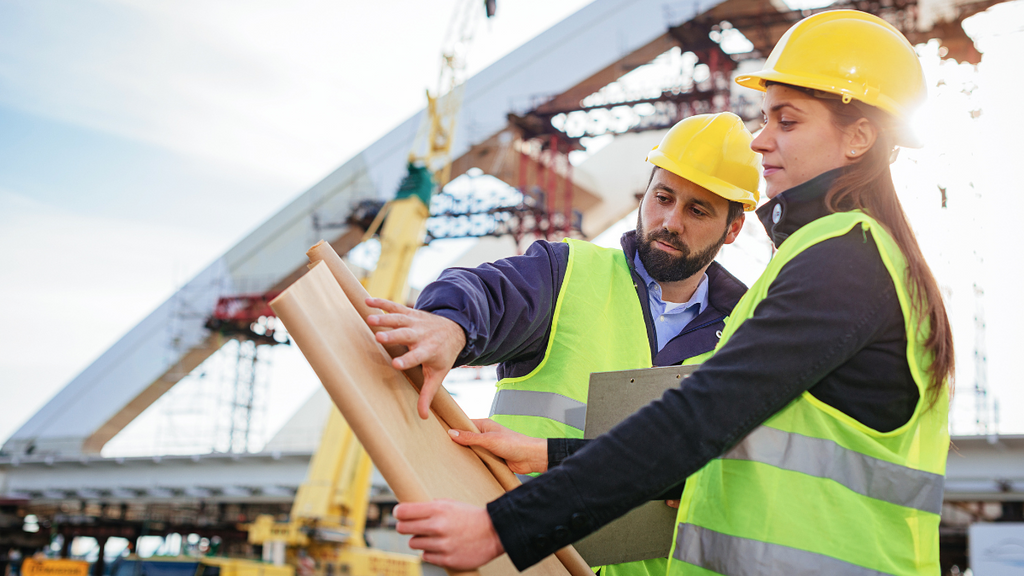The smart Trick of Geotheta That Nobody is Talking About
Table of ContentsGeotheta Things To Know Before You Get ThisThe 3-Minute Rule for GeothetaThe Best Guide To GeothetaUnknown Facts About GeothetaGet This Report on Geotheta

They conduct site investigations, gather examples, execute laboratory examinations, and analyze data to review the viability of the ground for construction tasks - Consulting Engineers. Based on their searchings for, geotechnical designers provide recommendations for structure layout, incline stability, preserving structures, and mitigation of geotechnical dangers. They work together with other experts, such as architects, architectural designers, and building teams, to ensure that geotechnical considerations are incorporated right into the general project design and application
By examining the habits and residential properties of soil and rock, they can determine potential geotechnical dangers such as landslides, soil settlement, or incline instability. Their expertise assists prevent failings or mishaps that can jeopardize lives and residential property. Here are some detailed tasks and obligations of a geotechnical engineer: Website Investigation: Geotechnical designers conduct website investigations to gather data on subsurface problems.
They interpret the information to understand the homes and habits of the soil and rock, including their strength, leaks in the structure, compaction characteristics, and groundwater problems. Geotechnical Evaluation and Style: Geotechnical designers assess the information accumulated throughout website investigations to evaluate the stability and suitability of the website for building and construction tasks. They do geotechnical calculations and modeling to review aspects such as birthing capability, settlement, incline stability, lateral planet stress, and groundwater flow.
Fascination About Geotheta
Structure Design: Geotechnical designers play an important duty in making structures that can safely support the desired structure. They examine the dirt conditions and lots needs to establish the appropriate foundation type, such as shallow foundations (e.g., footings), deep structures (e.g (https://giphy.com/channel/geotheta)., heaps), or specialized strategies like soil enhancement. They take into consideration elements such as settlement limits, bearing ability, and soil-structure interaction to develop optimum structure layouts
They examine building and construction strategies, display site tasks, and perform field assessments to confirm that the design suggestions are complied with. If unpredicted geotechnical concerns occur, they examine the circumstance and offer suggestions for remediation or modifications to the style. Risk Assessment and Reduction: Geotechnical engineers assess geotechnical risks and risks associated with the task website, such as landslides, liquefaction, or dirt erosion.

Cooperation and Communication: Geotechnical designers work carefully with various other experts involved in a job, such as designers, architectural engineers, and construction teams. Effective interaction and cooperation are necessary to incorporate geotechnical factors to consider into the general task design and building and construction procedure. Geotechnical designers offer technical competence, solution inquiries, and make sure that geotechnical requirements are met.
The smart Trick of Geotheta That Nobody is Discussing
Below are some kinds of geotechnical designers: Structure Engineer: Foundation engineers concentrate on making and evaluating structures for frameworks. They examine the soil conditions, tons demands, and website features to identify the most proper structure type and design, such as shallow structures, deep structures, or specialized strategies like heap structures.
They evaluate the factors affecting incline security, such as soil homes, groundwater conditions, and slope geometry, and establish see this methods to stop slope failures and minimize risks. Earthquake Engineer: Quake engineers specialize in evaluating and creating structures to endure seismic forces. They assess the seismic hazard of a site, evaluate dirt liquefaction capacity, and create seismic layout requirements to ensure the safety and security and strength of structures throughout earthquakes.
They perform area screening, accumulate examples, and examine the gathered information to identify the soil residential or commercial properties, geologic developments, and groundwater problems at a site. Geotechnical Instrumentation Engineer: Geotechnical instrumentation designers concentrate on tracking and measuring the actions of soil, rock, and structures. They install and preserve instrumentation systems that keep an eye on elements such as soil negotiation, groundwater levels, incline motions, and architectural displacements to assess efficiency and give very early warnings of possible issues.
The Best Guide To Geotheta
They carry out examinations such as triaxial examinations, combination examinations, straight shear tests, and leaks in the structure tests to collect information for geotechnical analysis and layout. Geosynthetics Engineer: Geosynthetics engineers focus on the style and application of geosynthetic products, such as geotextiles, geogrids, and geomembranes. They use these products to enhance dirt stability, enhance slopes, supply water drainage remedies, and control erosion.
They often tend to be investigatory individuals, which means they're intellectual, introspective, and curious. They are curious, systematic, rational, analytical, and logical. Some of them are also social, indicating they're kind, generous, cooperative, patient, caring, useful, empathetic, sensible, and pleasant - Geo Tech Engineer.
In the workplace environment, geotechnical designers make use of specialized software application devices to carry out computations, produce layouts, and analyze information. They prepare reports, review task requirements, interact with customers and employee, and coordinate project tasks. The office setup supplies a helpful environment for study, analysis, and cooperation with other professionals associated with the task.
Some Known Details About Geotheta
They often see project sites to conduct site examinations, analyze geotechnical conditions, and gather information for evaluation. These brows through include taking a trip to various areas, occasionally in remote or tough terrains. Geotechnical designers might execute soil tasting, conduct examinations, and screen construction tasks to make certain that the geotechnical facets of the job are being implemented properly.
Geotechnical engineers additionally function in specialized geotechnical research laboratories. Geotechnical laboratory designers function extensively in these atmospheres, dealing with screening equipment, operating tools, and videotaping data.